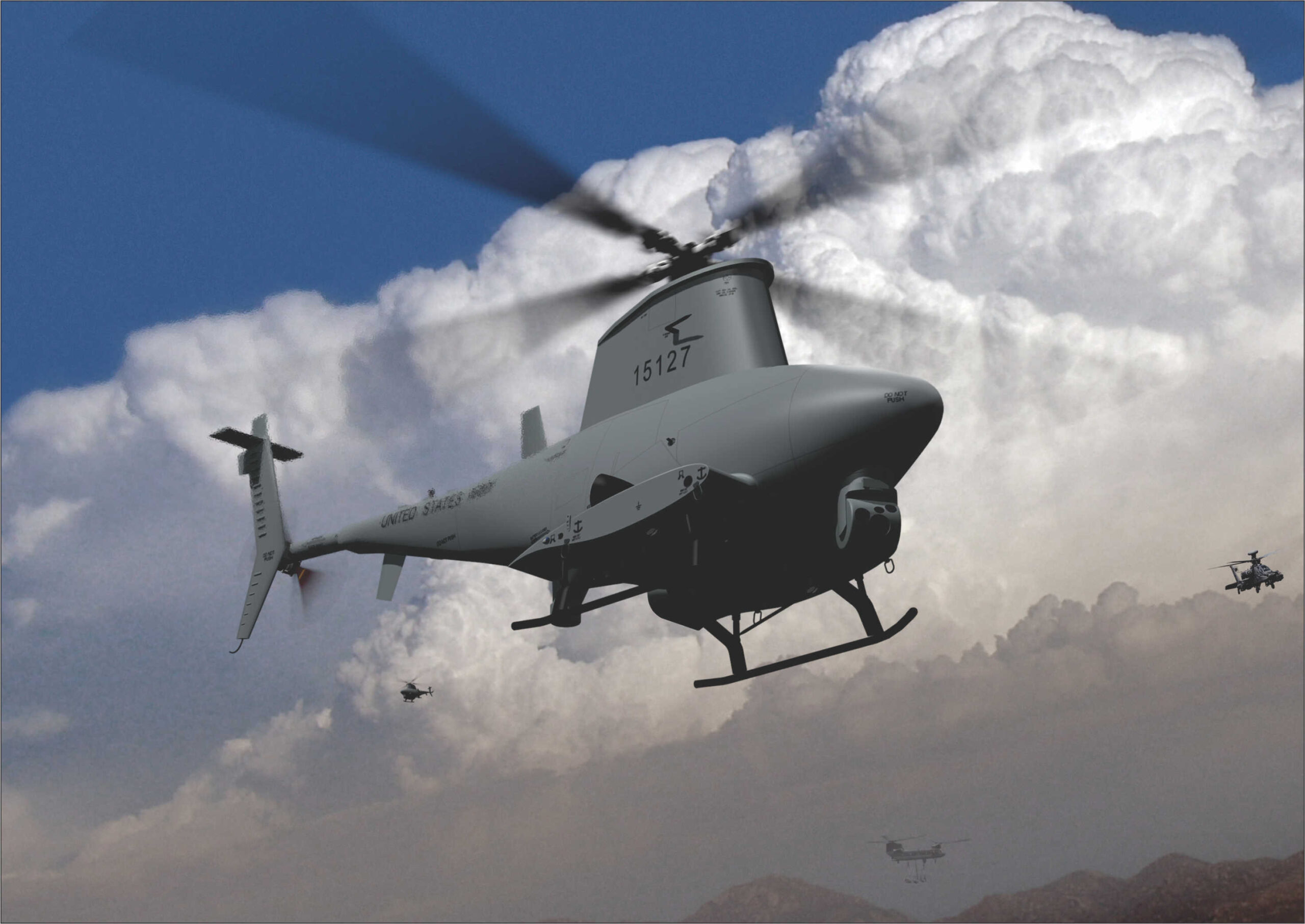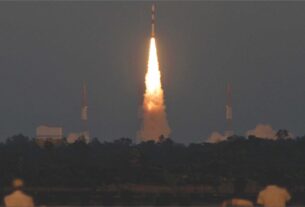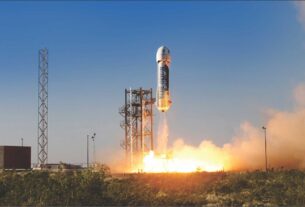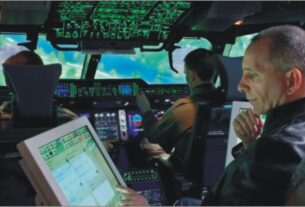Modern war is all about controlling the progress of combat scenario without getting directly engaged into the war theatre from a close proximity. For that, air superiority remains an essential military mission and instead of fighters now UAV and UCAV are all set to perform the task.
Although control of the air does not itself destroy or defeat the majority of enemy forces, it provides the freedom of action and strategic flexibility that allow other military forces to do so.
Air superiority is central to a full range of military capabilities, including power projection of sea and land forces, close air support, interdiction, and freedom of maneuver for ground forces.
The fighter aircraft that engage and destroy enemy airborne assets have traditionally been called air-superiority fighters. Air-superiority fighters and air-superiority UCAVs are be designed with a primary function of attacking enemy airborne aircraft to contribute to air superiority.
The terms UAV and UCAV also have many connotations that must be defined. The UAV is an aviation system that has as its centerpiece an uninhabited, reusable aircraft that sustains flight using onboard propulsion and aerodynamic lift.
The UCAV is a small subset of UAV that carries and delivers both lethal and nonlethal weapons.
As far as UCAVs are concerned, most visionaries see Suppression of Enemy Air Defence (SEAD) and Deep Strike as the most probable missions. The three D’s could characterize the missions of a UCAV: Dull, Dirty and Dangerous.
Dull means long endurance missions that can last for several hours, or even days-too long for a pilot to physically endure.
Dirty missions are those where threat of biological and chemical contamination is too high to risk sending in a manned aircraft.
Dangerous missions are nothing but combat missions. SEAD, for example, is one of the most dangerous missions that manned aircraft are used for today.
However, not many visionaries suggest that UCAVs will completely replace manned aircraft in the foreseeable future. The advantages of the UCAVs over their manned counterparts are: No crew risk, and vehicle cost, training and peacetime savings.
The technological challenges faced in the development of UCAVs today have resulted in the successful development of many technologies, such as miniaturization of electronics, improvement of sensors, development of reliable and jam resistant data links.
The design and development of a UCAV with stealth features is another challenge. Along with this there are other challenges related to issues such as the development of weapons and payloads, command and control, autonomy and cost effectiveness.
It is certain, that at some future date, combat units will see UAV/UCAV and fighter jets parked on the same flight line. Overall, the future of air combat lies in a mix of multi-role fast jets, multi-role big aircraft, UAVs/UCAVs and ground-based missiles.
The UAV is an aviation weapon system that operates as an uninhabited, reusable aircraft to sustain flight using onboard propulsion and aerodynamic lift.
It is a fascinating technological assemblage because the engineering challenge remains conceptually simple and operationally elusive-the achievement of flight without an onboard human pilot.
This challenge is heightened by a UCAV, which is designed to participate in combat and operate in a hostile environment. In the face of advanced ground and airborne threats, the air-superiority UCAV of the future will be required to gain and maintain control of the skies effectively and affordably.
Broken down to its most basic parts, any UCAV consists of three primary systems: air vehicle, ground control, and payload.
The air vehicle is the airborne portion of the UCAV system. It is normally comprised of the three components that allow the UCAV to fly: airframe, propulsion, and flight controls.
The UCAV airframe usually consists of the fuselage, wings, and tail. The required capabilities for a UCAV, such as the operational ceiling, endurance, speed, and payload determine its airframe dimensions, shape and construction materials.
Airframe design
These airframe features in turn affect the UCAV’s survivability, reliability, mission effectiveness, and affordability.
Throughout the twentieth century, most of the design issues for UCAV airframes paralleled those for manned aircraft.
The same will most likely be true over the next twenty-five years. Regardless, there are still many technological hurdles in the design of UCAV airframes.
There are three airframe design considerations and advances that will be desirable in an air-superiority UCAV in 2025. First, the vehicle must incorporate stealth to enhance its survivability in the high-threat environment.
The problem is that stealthy designs are expensive, and their benefits must be weighed against increasing cost.
The second consideration is wing design. An adaptive wing created with smart materials and structures will significantly increase aircraft maneuverability, range and payload.
The final consideration is airframe structure. An air-superiority UCAV will need high-temperature-cure graphite composite structures to significantly increase its capabilities.
These structures are extremely light and strong, but very expensive. Constructing a stealthy UCAV airframe made with adaptive, smart wings and graphite structures will be a significant technological challenge.
The method and type of propulsion is also a significant UCAV design consideration. Aircraft engines provide onboard propulsion and power generation to airframe and payload electronics.
Technology has traditionally imposed significant design restrictions on aircraft power plants; requirements for extended loiter times and endurance directly conflict with the requirements for high speed and high thrust.
This means that aircraft that have been designed for long on-station times have not had the thrust and maneuverability for an air-to-air engagement.
However, the engine should employ advanced heat transfer technologies to raise UCAV speed and efficiency. Finally, for safety and logistics support reasons, the UCAV must use heavy fuels. Significant advances in propulsion technology will be necessary to create an effective and affordable air-superiority UCAV.
Flight control system
Yet, the final component of the air vehicle is the flight control system. This element is also the least mature and perhaps most important, because flight control system failures have historically been the largest single contributor to unmanned vehicle mishaps.
In a manned aircraft the pilot monitors numerous visual, aural and somatosensory inputs to analyze the environment and determine an appropriate aircraft response.
UCAVs, though, are cybernetic machines that do not analyze their environment but simply track a few feedback variables and beyond that are perfectly blind to the environment.
The proliferation of the global positioning system (GPS) and high-speed computer processing power has solved a significant problem of UCAV flight control-location accuracy.
Two additional requirements must be addressed. First, air-superiority UCAVs in 2025 must incorporate reliable autonomous control. This will ensure safe, effective and reliable mission accomplishment.
On the other hand, experts believe new jet fuels will also increase UCAV performance. Beyond propulsion, fuel executes a second critical function in modern aircraft: it is circulated around the engine to provide a coolant before it is burned to produce thrust.
The fuel’s ability to absorb and transfer heat is a major limitation to existing engines. Scientists are developing a new type of jet fuel that is expected to take advantage of the major advances in refining technology that have evolved since the current aviation fuels JP-4 and JP-8 were first produced.
The new JP-900 fuel has been engineered to sustain temperatures of nine hundred degrees Fahrenheit, well over the current 575 degrees. JP-900 exploits the additional thermal stability and heat sink realized by taking JP-8 to the supercritical phase where the fuel has properties of both a gas and a liquid. Additional research into advanced endothermic fuels will further increase the performance of jet propulsion and aircraft.
While the airframe is the component that flies, the ground control station (GCS) is the component that manages and controls the mission. It is the ground support infrastructure
that can vary greatly in accordance with the complexity of the mission, the concept of operation, and the UCAV’s capability.
The GCS has four essential functions. First, it is the primary means to control, track and operate the UCAV.
Second, it is used to manipulate the payload and process air vehicle telemetry and payload data. Third, it is the communications conduit to transmit commands to the air vehicle and payload.
Fourth, it provides a mission-planning and execution interface for the air vehicle operator.121 There are two components of the ground control station that add significant cost and complexity to the UCAV system-data link and autonomy.
The operator in a GCS communicates with a UCAV through a radio frequency data link. There are two types of information that cross these frequencies.
First, the air vehicle transmits telemetry data that tells the vehicle operator basic flight information, such as airspeed, altitude and position.
For smooth, continuous perception by the human operator this information needs to be refreshed at a rate of no less than thirty times per second.
The second type of data the GCS receives over the data link is the information related to the payload and mission. On-board sensors and weapons can collect a vast array of information and send it in real time to the control station.
Satellites
To overcome the severe limitations imposed by radio line-of-sight requirements, satellites are employed to extend the operational range.
These satellites are only marginally capable of filling the high data-transfer needs. Reliable radio communication between a UCAV and its operator remains a significant impediment to unmanned operations.
The current American and allied satellite communications infrastructure is incapable of supporting any sizable number of UAVs or UCAVs.
The bandwidth necessary to support a single video imagery feed can be estimated as follows, using extremely conservative assumptions. Start with a video image of at least 300 by 300 pixels, and eight color bits per pixel.
It takes 720 kilobits to encode a single frame. At thirty frames per second, the necessary data transfer rate is 21.6 megabits per second.
If a 10:1 compression algorithm is used, the bandwidth requirement is reduced to 2.16 megabits per second.
Present day commercial communications systems offer data rate performance ranging from 2.4 kilobits per second in the recently-defunct Iridium network (Inmarsat-M), to 9.6 kilobits per second in the Globalstar system.
The military UFO constellation supports data rates of up to 64 kilobits per second and the Milstar system.
In addition to being sufficient, the data link between the GCS and an air-superiority UCAV in the future must be available and reliable. Data-link availability refers to the geographic area or coverage for a particular satellite system.
This is normally limited by orbital mechanics, the number of satellites in the system, and mission priority. An expanded network of communications satellites will greatly expand UCAV capability.
Data-link reliability refers to the robustness of the signal to electronic interference. UCAVs will often operate deep in enemy territory where the jamming will be adverse.
UAV will need a data link with sophisticated signal processing and anti-jam techniques such as spread spectrum and frequency hopping, backed up by robust logic which will allow the vehicle to continue its mission and return to base if the data link fails.
Sufficient, available and reliable data links will be required for air-superiority UCAV operations in the future. UCAV autonomy enhances the capability for the machine to function without input from the operator in the GCS. It can be viewed as both a policy decision and a software product.
The decision to use robotic warfare is grounded in policy and has significant implications on rules of engagement and the use of force. Autonomy is also the product of an extremely complex software product called artificial intelligence (AI).
UCAV control is a tradeoff between autonomy and data-link bandwidth. The previous discussion highlighted the difficulties with current data-link capabilities, which will be exacerbated with multi-spectral sensor suites and multiple airborne vehicles.
Autonomy has the potential to significantly decrease data-link requirements. At one extreme, a remotely piloted vehicle with low autonomy requires all of the information needed by a human operator to be relayed via data link to a remote cockpit.
This is an enormous amount of information to be conveyed via limited channels. At the opposite extreme, an autonomous UCAV with AI will have cognitive and reasoning ability similar to a human pilot.
The amount of information to be transmitted in this scenario is greatly reduced and pertains only to mission accomplishment. Low intelligence and low autonomy mean that bandwidth requirements are high.
On the other hand, as AI and autonomy increase, data link bandwidth decreases. Advances in both areas will be necessary to meet the needs of the future.
Payload
The capability of a UCAV is ultimately determined by its payload. While the air vehicle flies and the GCS manages the mission, the payload is the reason it flies.
Many modern payloads are extremely expensive, often exceeding the price of the air vehicle and GCS combined. There are two components of a UCAV payload: sensors and weapons.
The majority of current UCAV sensors are centered on the traditional intelligence, surveillance and reconnaissance (ISR) roles: visible and infrared (IR) imagery, synthetic aperture radar (SAR), moving target indicator (MTI), meteorological (MET) and multispectral (MS) imaging sensors.
There are many other types of ISR sensors presently being developed with militarily useful roles: communications intelligence (COMINT) sensors to intercept and locate enemy communications, electronics intelligence (ELINT) systems to intercept and locate enemy radars, acoustic sensors, non-imaging IR detection, laser energy detection, nuclear radioactivity detection and chemical agent detection systems.
The Predator UAV is just beginning to carry weapons today, but many additional systems are under development.
An air-superiority UCAV will probably need three types of sensors: radar, IR search-and-track system (IRSTS) and self-protection sensors.
The radar would be the primary sensor, and has four vital functions and correlating constraints. In the search role the radar needs a high off-boresight capability and high scan rate to increase search area.
In the raid-assessment role the radar needs a small beam width and multi-mode capability to resolve targets in close formation.
The IRSTS allows a UCAV operator to passively search, identify and shoot enemy aircraft; it should provide fire control and weapons management to IR and radar missiles.
Self-protection sensors and jammers are designed to detect and deny enemy emissions and attacks. These systems should include radio frequency (RF) and electro-optical (EO) and IR sensors to protect the UCAV in a hostile environment.
Most of these UCAV sensors are currently available or under development for manned aircraft and systems.
Air superiority
The most difficult part of technological advancement over the next twenty-five years will be the requirement to expand capability, decrease size and weight, decrease cost, and optimize integration of these sensors on a UCAV.
Integrating weapons into an air-superiority UCAV will be difficult. Because UCAVs will probably realize most of their initial cost and stealth advantages by being smaller than manned systems, they will have lighter payloads, use smaller weapons bays and require smaller weapons.
The ability to carry fewer and smaller weapons per mission means that lethality must be increased to realize the same level of mission effectiveness.
Achieving lethality with small weapons capable of being carried on small combat UAVs requires precision guidance and lethal, small warheads. This unique constraint has three implications for weapons employment on air-superiority UCAVs in the future.
An air-superiority UCAV must have some method to slave the missile’s IR seeker to the target’s IR energy source. The IR energy observed by the missile seeker is converted to electronic signals that enable the missile to acquire and track the target. The Sidewinder and AMRAAM families of missiles are projected to be appropriate weapons for near and mid-term applications.
This means that the UCAV will not have its own air-to-air weapons, but instead must be designed to carry and employ weapons that already exist. The constraints of current weapons may be altered in the future.
A hypervelocity missile is currently being developed to accomplish boost phase intercept (BPI) of theater ballistic missiles (TBM).
In the early phase of flight the missile will be command inertial-guided. A kinetic kill vehicle (KKV) will be deployed when the interceptor approaches the target intercept zone.
The KKV will employ an infrared seeker and divert thrusters to achieve a direct hit and kill on the target.
A UCAV carrying this missile will be required to carry a thousand-pound payload (two missiles) and loiter for long periods of time.
While the Sidewinder and AMRAAM may be adequate weapons for the foreseeable future, a new generation of weapons is being developed to expand UCAV lethality.
A UCAV is a complex system of systems. Significant technological advances in each of its basic components are necessary to develop and design an effective and affordable air-superiority UCAV.
The air vehicle-airframe, propulsion, flight controls-flies the mission. The data link and autonomy make up the ground control station, which manages the mission. The payload and weapons turn a UAV into a UCAV. The next chapter will address the potential for technological advance in each of these critical components.
Boeing in particular is excited about what the technology that may come to be in the next few years. With the A160 Hummingbird having shown that UAVs can have an extended presence and reach impressive heights, the predictions on the show floor push the envelope even more.
Future UAVs may be capable of reaching heights that are over double or triple what the A160 can reach and stay in the air for months at a time.
These UAVs would resemble gliders with solar panels to maintain power and sensor arrays. Rather than rely on satellite imagery these UAVs would give warfighters persistent situational awareness.
Of course, UAVs have been trending towards other extremes as well. Tiny UAVs that can be flown through open windows are in the works.
These miniscule aircraft will stay airborne in times measured in seconds or minutes while giving valuable information to soldiers on the ground without giving away their position like a thrown ground vehicle might.
In addition to new technical capabilities, the future of UAVs is trending towards automated systems. Rather than having several personnel monitoring a UAV, in the future it is expected that one person can monitor many different UAVs at once.
The Hummingbird is an example of a step toward automation, with the ability to fly to land without any assistance with high accuracy or perform a number of similarly complex feats without human guidance.
Automation frees up soldiers to perform other tasks and ultimately is a cost-saving measure, as less personnel are needed for UAV flights.
These UAVs are not just the product of wishful thinking, they have either already been made (in the case of tiny UAVs) or are currently in the Research and Development phase.
Between the cutting-edge technology and the tangible optimism at the Army Aviation Association of America Exposition, the budget cuts seem like a non-factor for innovators in the industry.
The primary motivating factor influencing the acceleration of development of UAV for military applications is the significant potential for cost savings.
Effectiveness
Although the combat effectiveness of a weapon system is of utmost importance, economic impact is also a necessary consideration in military procurement; the budget is not unlimited and competing requirements create pressure to keep costs down.
However, a note of caution is required-it is difficult to compare the effectiveness and efficiency of legacy weapons with those of systems being designed.
Current weapons have a history of performance from which data can be gathered. They have proven their effectiveness and efficiency.
Future weapons have no history; their effectiveness and efficiency can only be estimated, calculated or expected. Differing opinions on expectations are the subject of speculation and, at times, great controversy.
Effectiveness is defined as the capability of a UCAV to accomplish a desired military mission. Efficiency, on the other hand, is the ability to accomplish the task as a function of resources expended.
Cost efficiency specifically evaluates combat effectiveness per dollar spent. When discussing the affordability of UCAVs there is a tendency to focus only on the air vehicle and its constituent subsystems; the cost of UCAV should also include the interdependent elements of vehicle, weapon, and a highly integrated command and control capability.
A full and fair comparison of manned and unmanned aircraft costs must consider the three phases of any weapon system’s life cycle cost: development, procurement, operations and support costs.
The comparison should also ensure the same scenario and missions are evaluated, but should not dictate tactics or methods of operation.
Achieving the desired effect is the overriding goal. A UCAV need not replicate its manned counterpart’s performance if it can functionally achieve the same mission objectives at a lower overall cost.





